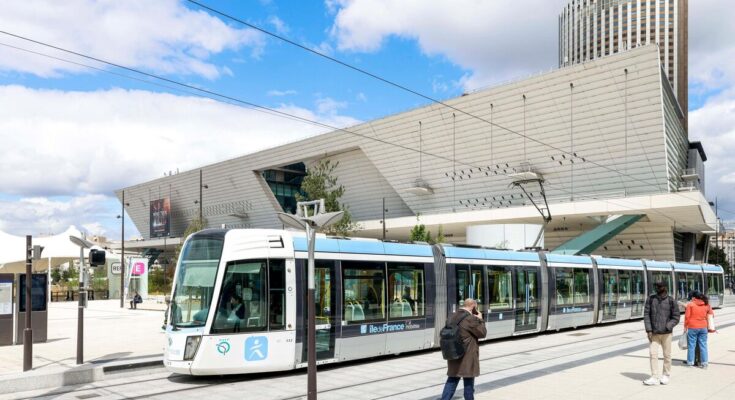IDFM, Quesaco? The administrative mille-feuille is often quite confusing for the French. When it comes to public transport, many Île-de-France residents have difficulty identifying who does what between the Île-de-France Region, the municipal government and historic operators such as SNCF or RATP.
On paper, the division of roles is clear. The former Île-de-France Transport Union (Stif), renamed Île-de-France Mobilités (IDFM) in June 2017, funds and manages the entire system. These powers are administered by elected officials from the regional council and led by Valérie Pécresse (LR), regional president.
The blue, white and gray IDFM logo and colors now appear on most buses, trams and trains. Has this policy produced results? According to an Ipsos survey conducted in October among 2,000 residents of Ile-de-France, awareness of IDFM is increasing.
Three-quarters of respondents said they “understood what was happening” when they heard about this administration, while 21%, on the other hand, “didn’t understand for sure.” The study also states that 79% have a “good image” of the institution, or eight points more than in 2019. 65% say they have a “good image of transportation” in general, 17 points more than six years ago! Finally, 63% believe that public transport conditions have improved since the end of the Covid-19 health crisis.
“There is still a lot to do”
“Overall, the general feeling is one of satisfaction, although much remains to be done and certain lines remain in difficulty,” we observed at IDFM. In detail, the modes of transportation most popular with Ile-de-France residents are trams (85% satisfied), Transilien trains (75%) and buses (74%). Metro arrived next. There are 30% of users who are “somewhat dissatisfied” or “not satisfied at all”. RER ranked bottom, with 36% feeling dissatisfied.
Public opinion is more divided on other aspects. A quarter of respondents believe that hygiene “has changed for the worse” since 2019 and 30% also believe that safety has worsened. Regarding tickets and new ways to buy transport tickets, especially via smartphone, this caused a clear reaction: a quarter of respondents thought that things had changed for the worse (+11 points) while 62% saw positive changes (+19 points). “There are many new things, these are new habits that need time,” said IDFM.
The Ipsos study, carried out by Île-de-France Mobilités, did not focus on prices, which change annually by a 1% inflation rate, since the financial agreement was signed in 2023. In an Ifop study published on November 12, 53% of Paris region residents said they were quite satisfied with transport. But 45% consider it “too expensive compared to the quality of service”. This figure is 6 points more than the national level. A sign of necessity that must be taken into account in an area where public transport is very important and used massively.


